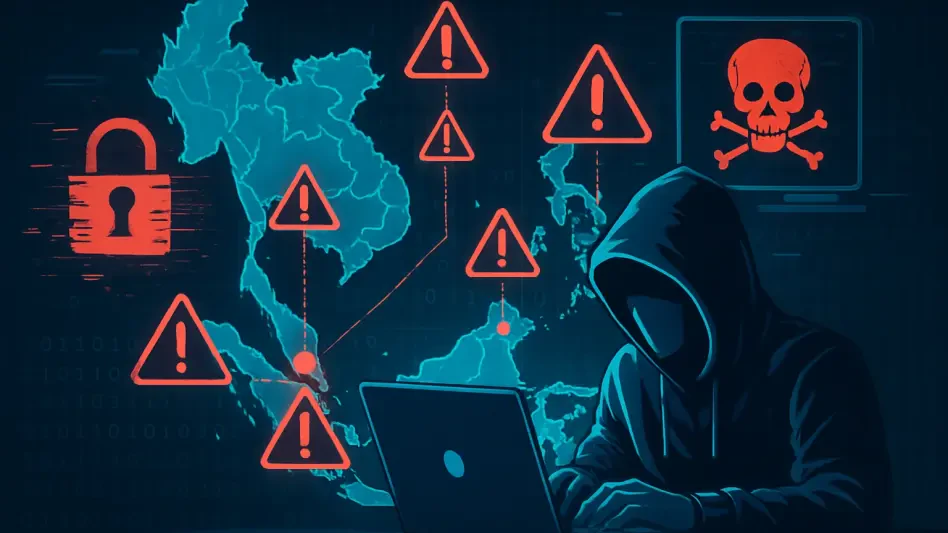A recent investigation has revealed a troubling breach in data security involving a popular parking app, where cybercriminals known as doxxers have exploited the app’s data to locate and identify Tesla owners, highlighting severe vulnerabilities in user privacy protection. This incident underscores the profound risks associated with the collection and storage of personal data by digital applications, even those that aren’t typically linked with high-risk information.
The Doxxers’ Manipulative Tactics
Exploitation of Presumed Secure Data
The cybercriminals accessed the parking app’s data, which was assumed to be secure, and repurposed it maliciously. These sophisticated data manipulation techniques allowed them to identify and pinpoint the addresses of Tesla owners, illustrating a major flaw in the app’s security protocols. This disturbing capability showcases how even data meant to facilitate everyday conveniences can be turned into harmful tools when falling into the wrong hands. The inherent trust users place in the security of their personal information is fundamentally compromised by such breaches, raising critical questions about the efficacy of current security measures.
These doxxers used advanced methods to breach what was presumed to be a robust security framework. By breaching the system and extracting sensitive user data, they demonstrated the potential consequences of insufficient security on seemingly harmless applications. This exploitation starkly underscores the necessity for apps managing personal data to constantly innovate and upgrade their security mechanisms to stay ahead of evolving cyber threats. The ease with which these attackers were able to manipulate the data further stresses the need for developers to embed rigorous security protocols from the onset of app development.
The Dark Web Connection
Operating anonymously on the dark web, these doxxers leveraged the confidential information to target Tesla owners, creating an environment of vulnerability and fear. The dark web, a dedicated network for illicit activities, provided the perfect platform for these cybercriminals to orchestrate their malicious plans without leaving traces. This revelation highlights a deeper, systemic issue within data security measures, revealing how existing protective strategies are inadequate against the sophisticated tactics employed by modern cybercriminals.
The dark web’s role in facilitating such breaches emphasizes the pervasive and relentless nature of cyber threats. Through this anonymized network, the doxxers could exchange and monetize the stolen data with minimal risk of detection. Such activities on the dark web not only endanger individual privacy but also compromise broader cybersecurity landscapes. This case serves as a vivid reminder that securing user data is not merely an application-specific endeavor but an ongoing, comprehensive necessity requiring constant vigilance and upgrades across all levels of digital infrastructure.
Escalating Privacy Concerns
Risk of Data Collection and Storage
The incident raises significant concerns regarding the widespread practice of collecting and storing user data by various applications. While these tools are often perceived as secure, users are continuously at risk of having their information breached and misused. This pervasive reality poses serious questions about the methods and responsibilities of companies gathering and storing such data. The ease of access obtained by these doxxers starkly illuminates the gaps within these systems and the critical need to reassess data protection strategies moving forward.
The growing frequency of data breaches makes it clear that reliance on traditional security methods is no longer sufficient. As more personal data is stored online, the potential for misuse escalates, placing users in vulnerable positions. The necessity for stringent data encryption, robust access controls, and continuous monitoring of data storage systems has become paramount. Each breach further erodes the confidence users have in digital platforms, urging a recalibration of security priorities to stem the tide of data exploitation.
Erosion of User Trust
As personal data continues to be compromised, the trust users place in apps and digital services is severely impacted. This trust is foundational for the continued growth of the digital economy; without it, the adoption of innovative technologies faces significant obstacles. The exposure of such private information breaches users’ sense of security and privacy, causing apprehensions about interacting with digital services. Concerns about personal data safety discourage users from embracing newer technologies and innovations.
The consistent erosion of user trust due to these incidents necessitates an immediate and thorough response. App developers and digital service providers must take proactive steps to rebuild this trust through enhanced transparency and user-centric privacy policies. Implementing visible changes, such as more transparent data handling practices and rigorous, user-friendly security features, can help regain user confidence. Understanding that trust recovery is a lengthy process, continuous efforts to ensure data security and user education about protective measures are essential.
Vulnerabilities of Connected Systems
Internet-Connected System Risks
Even applications not typically associated with high-risk data, such as parking apps, can become gateways for cyber exploitation. This case vividly underscores the inherent vulnerabilities of systems connected to the internet. Every application, regardless of its purpose, is a potential target if it carries user data, highlighting the critical importance of embedding robust security measures across all digital tools. Internet connectivity, while bringing immense convenience, simultaneously opens up numerous pathways for cyber threats.
The increasing reliance on connected systems in today’s digital era necessitates a comprehensive approach to security. Each app, device, or online service forms a part of a larger, interconnected network, making isolated security measures insufficient. An integrated, multi-layered security approach that considers the entire ecosystem is vital. Regularly updating systems to address newly discovered vulnerabilities and incorporating advanced security technologies, such as AI-based threat detection, can significantly bolster defenses against such cyber exploitation attempts.
Necessity of Robust Cybersecurity Measures
The breach demonstrates the critical need for robust cybersecurity frameworks to safeguard user data. Entities responsible for data collection must prioritize rigorous security protocols to prevent unauthorized access and potential misuse. An inclusive security framework should encompass proactive measures such as real-time anomaly detection, regular security audits, and comprehensive incident response strategies. These measures must be consistently reviewed and updated to combat the evolving techniques employed by cybercriminals.
Organizations must also foster a culture of cybersecurity awareness among all stakeholders. Educating employees, users, and partners about the importance of cybersecurity, safe practices, and the potential consequences of data breaches is essential. Additionally, implementing end-to-end encryption, multi-factor authentication, and secure coding practices can significantly elevate the defense against cyber threats. The long-term impact of robust security measures extends beyond individual apps to enhancing the overall trust and reliability of digital services at large.
Broader Implications
Growing Cyber Threats
The activities of these doxxers mirror a growing trend of cybercriminals exploiting system loopholes. With digital transformation accelerating across industries, cyber threats have become increasingly sophisticated, targeting any potential vulnerability. The frequency of such breaches underscores the pressing need for heightened vigilance and proactive countermeasures in the tech industry. Continuous monitoring, threat intelligence sharing, and collaborative efforts are essential in preempting and mitigating the impact of emerging cyber threats.
As technology continues to evolve, so do the methodologies of cybercriminals. Staying ahead of these threats requires a dynamic and multifaceted approach to cybersecurity. Investing in cutting-edge technologies, building robust threat detection systems, and fostering cross-industry collaborations can enhance resilience against cyber attacks. The case of the parking app breach serves as a stark reminder of the ongoing and escalating battle against cyber threats, necessitating a united and relentless effort from all stakeholders involved.
Need for Stringent Privacy Laws
As privacy violations escalate, the importance of implementing stringent privacy laws and ethical data usage regulations becomes paramount. Protecting personal data from unauthorized access is crucial in maintaining user confidence and security. Legislative bodies and regulatory authorities must work in tandem with technology companies to establish and enforce comprehensive privacy frameworks. Such frameworks should mandate stringent data handling practices, regular compliance checks, and clear guidelines for reporting and addressing data breaches.
Stringent privacy laws act as both a deterrent to potential cybercriminals and a protective layer for users. Clear and enforceable regulations ensure that entities collecting and managing user data adhere to the highest standards of data protection. Moreover, a transparent legal framework empowers users, granting them control over their data and the confidence that their privacy is upheld. As digital ecosystems continue to expand, the need for robust legal protections and ethical data practices becomes increasingly critical in safeguarding user interests.
Reinforcing Data Security
A recent investigation has exposed a disturbing security breach involving a widely used parking app, where cybercriminals known as doxxers have taken advantage of the app’s vulnerabilities to pinpoint and identify Tesla owners. This alarming incident highlights significant flaws in the way user privacy is protected within digital applications. It demonstrates that even apps not commonly associated with sensitive data can pose substantial risks when improperly managed. The collection and storage of personal information by digital platforms, thus, require more stringent safeguards to protect users from potential exploitation. This scenario brings into sharp focus the crucial need for organizations to prioritize data security and ensure robust privacy measures are in place. Not only does it reflect the growing threat of cyber-attacks, but it also underscores the importance of scrutinizing even seemingly low-risk apps to ensure comprehensive protection against unauthorized access and misuse of user data.







